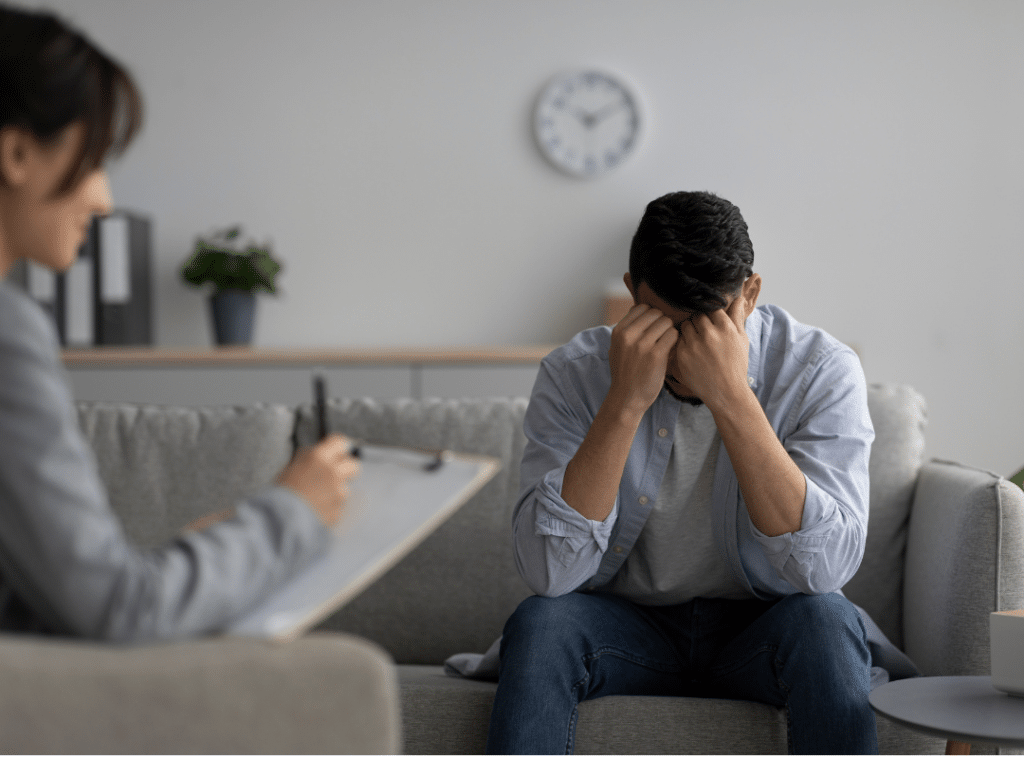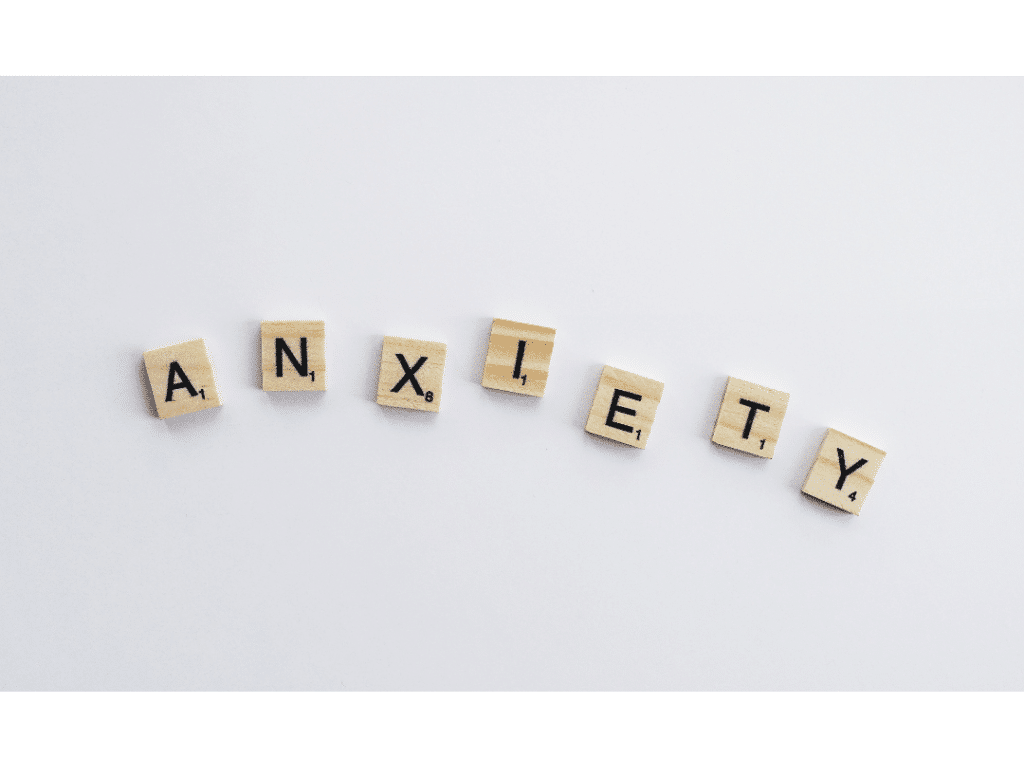Anxiety Disorders in Older Adults: Impact on Health and Lifestyle
Did you know that anxiety disorders affect between 14% and 17% of older adults? This often-overlooked issue can seriously compromise their health and lifestyle, making it essential to understand how these disorders manifest and the unique challenges they pose. At Westmont Living, you might be surprised to learn about the subtle symptoms that often go unrecognized and how they can lead to significant changes in daily life. Exploring the underlying factors and potential solutions could reveal critical insights into improving the well-being of older adults facing these challenges.

Prevalence of Anxiety Disorders
Anxiety disorders are surprisingly common among older adults, affecting approximately 14% to 17% of those aged 65 and older. This prevalence of anxiety disorders in older adults often goes unrecognized, leading to significant underdiagnosis and undertreatment.
Many factors contribute to this oversight, including the misconception that anxiety is just a normal part of aging.
You might be surprised to learn that only about one-third of older adults with generalized anxiety disorder receive appropriate treatment. This neglect diminishes their quality of life and increases vulnerability to other health issues.
The emotional toll of untreated anxiety can manifest in physical symptoms, social withdrawal, and a decline in overall well-being. As such, the importance of early recognition and intervention cannot be overstated, as seniors must lead fulfilling lives.
As someone who seeks to serve others, recognizing these statistics can empower you to advocate for the mental health of older adults.
Awareness is essential; understanding the true prevalence of anxiety disorders can lead to more proactive measures in supporting those affected.
Risk Factors and Vulnerabilities
As you explore the complexities of mental health in older adults, it’s important to recognize the various risk factors that can heighten vulnerability to anxiety. Understanding these causes of anxiety in older adults is crucial for providing effective support.
Here are three key risk factors to evaluate:
- Chronic Health Conditions: Issues like heart disease or COPD can exacerbate feelings of anxiety due to ongoing physical limitations and concerns about health deterioration.
- Social Isolation: Many older adults face loneliness as friends and family members pass away or as mobility decreases, leading to increased anxiety and feelings of helplessness.
- Gender Differences: Research shows that women are at double the risk of developing anxiety disorders compared to men, often due to hormonal fluctuations and societal pressures.
These factors intertwine, creating a complex web of vulnerabilities. Additionally, engaging in mindfulness techniques can help mitigate some of the anxiety experienced by older adults.
Recognizing Symptoms of Anxiety
Understanding the risk factors that contribute to anxiety in older adults lays the groundwork for recognizing its symptoms. You might notice that anxiety manifests through a variety of physical, cognitive, emotional, and behavioral signs.
Common physical symptoms include shakiness, difficulty breathing, nausea, and dizziness, which can often resemble the symptoms of panic attacks in the elderly. These manifestations can be distressing, leading to further isolation and worry.
Cognitively, your loved one may experience confusion, forgetfulness, or racing thoughts that impede their daily functioning.
Emotionally, irritability, mood swings, or obsessive thoughts may hinder their ability to enjoy life. You might also see behavioral changes, such as withdrawal from social activities or avoidance of situations that trigger anxiety.
Recognizing these symptoms is vital for timely intervention. If you notice someone exhibiting these signs, encourage them to seek help. Addressing anxiety not only improves their mental health but also enhances their overall quality of life. Additionally, understanding that depression can contribute to memory loss is important for addressing cognitive symptoms in older adults experiencing anxiety.
Types of Anxiety Disorders
When it comes to anxiety disorders in older adults, understanding the different types can help you identify what someone might be experiencing.
You may encounter conditions like Generalized Anxiety Disorder, phobias, or even Panic Disorder, each presenting unique symptoms and challenges.
Recognizing these disorders is essential, as it allows for better support and targeted treatment strategies to improve quality of life. Additionally, fostering social connections can play a significant role in alleviating feelings of anxiety and promoting overall mental well-being.
Common Anxiety Disorders
Anxiety manifests in various forms, each presenting unique challenges that can greatly impact daily life. For older adults, understanding these common anxiety disorders is essential for providing proper support. Here are three prevalent types:
- Generalized Anxiety Disorder (GAD): This disorder involves persistent worry about everyday matters, making it difficult to relax or concentrate. Physical symptoms, such as fatigue and restlessness, often accompany the emotional turmoil.
- Phobias: Intense, irrational fears can emerge, whether it’s a fear of heights, certain animals, or even social situations. These phobias can limit daily activities and lead to avoidance behaviors.
- Panic Disorder: Characterized by sudden and overwhelming panic attacks, individuals may experience racing hearts, dizziness, or a feeling of impending doom. These episodes can be debilitating and often lead to avoidance of situations where they fear an attack might occur.
Recognizing these common anxiety disorders allows caregivers and healthcare providers to tailor interventions effectively.
Symptoms and Challenges
While many may believe anxiety is just a normal part of aging, the reality is that it manifests through a range of symptoms that can markedly disrupt an older adult’s life. Common symptoms include excessive worry, restlessness, and difficulty concentrating, all of which can lead to significant challenges in daily functioning.
Generalized Anxiety Disorder (GAD), for instance, may cause persistent racing thoughts and physical discomfort, complicating relationships and self-care.
Phobias, like fear of falling or social situations, can exacerbate isolation, while Panic Disorder can trigger sudden, overwhelming terror that feels unmanageable.
Obsessive-Compulsive Disorder (OCD) might lead to compulsive behaviors that interfere with routine activities, and PTSD can resurface long-buried trauma, especially in stressful environments.
Recognizing these symptoms is vital for timely intervention. Many older adults struggle with stigma and may resist seeking help, further complicating their challenges.
Fostering awareness and understanding can help you better support those experiencing anxiety, helping them navigate these obstacles and restore normalcy in their lives.
It’s important to approach these discussions with empathy and a commitment to improving their mental health.

Treatment and Management Options
Effective treatment and management options for anxiety disorders in older adults are essential for restoring well-being and enhancing quality of life. Addressing anxiety not only alleviates symptoms but also fosters a sense of control and connection.
Here are three pivotal approaches to evaluate:
- Therapy: Cognitive Behavioral Therapy (CBT) is highly effective, helping you identify and change negative thought patterns. Engaging in therapy offers coping strategies tailored to your specific needs.
- Medication: Selective serotonin reuptake inhibitors (SSRIs) are commonly prescribed, providing relief from anxiety symptoms. Your doctor can work with you to find the right medication and dosage.
- Lifestyle Changes: Incorporating stress management techniques such as mindfulness, regular physical activity, and maintaining social connections can greatly enhance your overall well-being.
Barriers to Effective Care
Many older adults face significant barriers to receiving effective care for anxiety, which can lead to prolonged suffering and decreased quality of life.
One major issue is the disconnect between physical symptoms and mental health conditions; many healthcare providers may overlook anxiety when older adults present with bodily complaints. This often results in barriers to diagnosis and care. Additionally, co-occurring illnesses and cognitive decline complicate recognition, making it difficult for both patients and providers to identify anxiety disorders.
The stigma surrounding mental health remains a profound barrier, preventing many from seeking help. Older adults might fear judgment or believe that anxiety is a normal part of aging, which discourages them from discussing their struggles.
Loved ones may notice signs of anxiety, such as weight loss or social withdrawal, yet they might hesitate to intervene due to uncertainty or a lack of knowledge about mental health.
Increasing awareness and fostering a supportive environment is essential. By understanding these barriers, caregivers and healthcare professionals can better advocate for older adults, ensuring they receive the timely, effective care they need to improve their mental well-being.

Resources for Support and Information
As you navigate the complexities of anxiety in older adults, it’s important to know where to find reliable support and information. Accessing the right resources can empower you to help those in need and foster understanding around anxiety disorders.
Here are three significant resources for support and information:
- Anxiety & Depression Association of America: This organization provides thorough guidelines for treatment and coping strategies tailored to older adults facing anxiety.
- Geriatric Mental Health Foundation: Focused on addressing the unique challenges of mental health in the elderly, this foundation offers valuable insights and support networks to overcome anxiety.
- Institute on Aging: This resource discusses symptoms and effective therapeutic strategies specifically for managing anxiety in older adults, promoting a holistic approach to mental health.
Utilizing these resources for support and information can help you recognize symptoms, facilitate timely interventions, and advocate for better mental health outcomes.
In steering through the nuances of anxiety disorders, it’s crucial to recognize their profound impact on older adults. You can foster a fulfilling future by addressing the symptoms and seeking supportive solutions. Awareness, acceptance, and action are key to breaking the barriers often hindering effective care. Let’s prioritize mental well-being and promote positive paths toward peace and purpose together. Remember, you’re not alone in this journey—support is available and essential for a brighter tomorrow. For assistance, reach out to Westmont Living at 858-456-1233.
Discover the level of care you or your family member requires.What Level of Care Do You Need?
Frequently Asked Questions on Anxiety in Older Adults
- What is the most common anxiety disorder in older adults?
The most common anxiety disorder in older adults is generalized anxiety disorder (GAD). It is characterized by persistent and excessive worry about various aspects of life, such as health, finances, or family, often accompanied by physical symptoms like fatigue and muscle tension. - What causes sudden anxiety in the elderly?
Factors like significant life changes, chronic illnesses, medication side effects, or cognitive decline can trigger sudden anxiety in the elderly. Stressful events, such as the loss of a loved one or fear of independence loss, may also contribute to acute anxiety episodes. - What is a generalized anxiety disorder in the elderly?
Generalized anxiety disorder (GAD) in older adults involves ongoing, uncontrollable worry about everyday situations. This condition often includes symptoms such as restlessness, difficulty concentrating, sleep disturbances, and physical discomfort, which may interfere with daily functioning. - How to deal with elderly anxiety?
Managing anxiety in older adults can involve a combination of approaches, such as providing reassurance, encouraging physical activity, and practicing relaxation techniques like deep breathing. Professional interventions, such as counseling or medication, may be necessary for more severe cases, and it is important to consult a healthcare provider for a tailored treatment plan.









